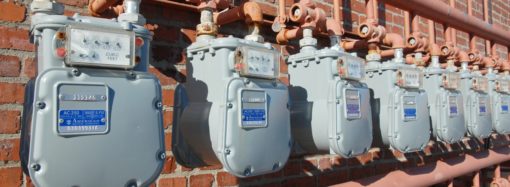The Wall Street Journal published published a brief editorial titled “Cellulosic Ethanol and Unicorns” blasting the government’s unrealistic expectations about the commercially mythical fuel cellulosic ethanol, “second-generation fuels made from stocks like switchgrass or the wood chips that George W. Bush invoked in his 2006 State of the Union.”
At the time of Bush’s speech, production was experimental. No problem, government will subsidize production and force a market. With massive subsidies encouraged by both the Bush and Obama administrations and government mandates on production (EPA requires 6 million gallons by 2011), Americans can free themselves of “foreign oil” by filling their gas tanks with grass and wood chips.
Looking for cellulosic ethanol? Keep looking. According to the WSJ:
Zero gallons have been produced in the last six months and the corner isn’t visible over the next six months either. The EPA has only approved a single plant to sell the stuff, operated by Range Fuels near Soperton, Georgia. The company used to be a press corps favorite and has been lauded by the last two Presidents, but it shut down its cellulosic operations earlier this year to work through technical snafus.
Despite no ability to produce the fuel, Congress can penalize financially U.S. oil refiners, which means taxpayers who subsidized cellulosic ethanol will pay again for the failure. Specifically:
Congress decided that some companies should be penalized if the targets aren’t met. But they’re not the companies that importuned the government for mandates and corporate welfare. They’re the U.S. oil refiners that make gasoline, which will end up buying six million cellulosic waivers by year’s end at $1.13 a pop. That’s $6.78 million in higher costs at the pump, in return for nothing.
Government got the idea that it could create a market for a fuel that doesn’t exist commercially from, of course, itself. Through our neighbors at the National Renewable Energy Laboratory (NREL), the lead laboratory in the biomass program, the goal was “to ensure that cellulosic ethanol is cost competitive by 2012.”
A May 2008 NREL press release boasts about the collaborative effort between Dupont, including its subsidiary Genencor, and NREL:
DuPont and Genencor expect to have a pilot plant demonstrating their technology package in operation by 2009, and a commercial-scale facility operational in the next three years. The joint venture expects to license its technology package to ethanol producers.
“This is precisely the outcome we hope for from our work with industry,” NREL Director Dan Arvizu said. “Developing the scientific underpinnings of technology that lead to clean, sustainable ways of powering our cars, homes and businesses is vital to the future of the nation and the world.”
Since 2000, the DOE has supported research and development with DuPont and Genencor through grants totaling more than $49 million for the development of pretreatment processes, advanced ethanol conversion organisms and improved enzymes.
Through Cooperative Research and Development Agreements (CRADAs), NREL has helped the companies advance the science and engineering in the technology package they will license or use to produce cellulosic ethanol.
Lack of demand and lack of ability to produce it commercially have not stopped the flow of corporate welfare. The Argus Leader, the newspaper of Sioux Falls, SD, reported on July 17 that the Department of Energy tentatively agreed to a $105 million loan agreement for a cellulosic ethanol production plant in Iowa, which might be able to produce commercially by 2013.
A DOE press release claims the $105 million will “create” more than 200 temporary construction jobs and 40 permanent jobs (roughly a half million dollars per job) to produce 25 million gallons of a fuel that does not yet exist commercially.
Five plus years and billions of dollars after President Bush first touted grass and wood chips in our gas tanks, taxpayers still shell out money to create the far-fetched fuel. Even the EPA has lowered its expectations on commercial production despite the fact that government mandated a market:
To some extent, demand will be guaranteed. Congress passed a renewable fuels standard in 2005 that originally called for 100 millions of cellulosic ethanol to be blended into the fuel supply by this year.
Lawmakers had bet on the commercial technology maturing more quickly, but production has not kept pace with policy: to date, zero gallons of cellulosic ethanol have been produced commercially. The Environmental Protection Agency has since scaled back this target to 6.5 million gallons a year.
Thanks to Colorado’s own NREL we still can believe. We should be thankful that Fifth District Congressman Doug Lamborn (Republican) reconsidered his position to reduce funding for NREL’s renewable energy research otherwise we might not be able to enjoy taxpayer-subsidized fuel fantasies.
If we can’t make our fantasies a reality, we can just tax the lack of reality. The WSJ suggested at the end of its column, “Perhaps the EPA can also find someone to tax for the lack of unicorns.”







